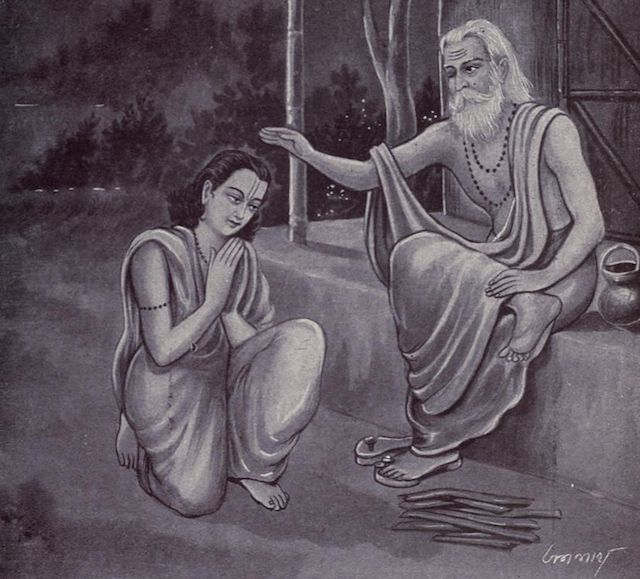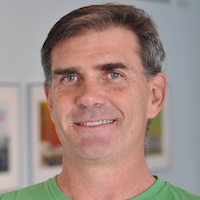
“Almost suspended, we are laid asleep
In body, and become a living soul:
While with an eye made quiet by the power
Of harmony, and the deep power of joy,
We see into the life of things.“ ~ William Wordsworth
~
A spiritual teacher is a vessel through which truth is communicated.
While truth is self-evident, it often needs the voice of a teacher in order to be of benefit to those who are interested in its nourishment. Spiritual seekers naturally look to a teacher to dispel ignorance and gain the true fruits of spiritual practice—causeless, timeless, invincible happiness.
For a teaching to positively transform our lives, we need to be in accord with our teacher and his or her teaching. As the Wordsworth’s poem states, deep insights arise when we are in a state of harmony with ourselves, each other and the world. Every teacher has a different personal history and experiences truth in his or her own way. Because of that, we’ll likely find that we can relate more effortlessly to one teacher’s slant and vocabulary than someone else’s. It will be difficult to benefit from any teacher or teaching about which we have persistent doubts.
After more than 30 years on the path, I’ve found immense value in having a spiritual teacher. My teacher wasn’t the first guide I found, nor is he the last person I’ve learned from, but it’s through his teachings that I’ve found the benefits of lasting joy and peace. Here are some of the unique benefits of studying with a spiritual teacher, along with some metrics to help you gauge whether your teacher and practice are right for you.
Why Study with a Teacher?
Despite the intimate and personal nature of meditation, there is much to be learned from others. When it comes to the pragmatic aspects of meditation, we don’t need to reinvent the wheel—we can and should learn from others and our choice of teacher matters.
I struggled with Spanish in high school. My classroom teacher pushed us too hard and I became confused and discouraged. Fortunately, I had a Spanish-speaking neighbor who was able to explain the grammar in a way I could understand. As a result of her help, I was able to keep up with everyone in class. So the teacher is important but the “right” teacher is a personal matter. One size does not fit all.
It is my view that the best teachers are those who put us at ease and empower us to realize our own capacity. Likewise, the best teaching is that which most readily reveals to us our true nature. Self-knowledge is the aim of yoga; other kinds of knowledge are at best secondary. We need to know who we really are, inside and out, and this is difficult without the assistance of a good teacher.
What to Expect.
The ancient yoga texts (Upanishads) say, “When the student is ready, the teacher appears.”
I have been a seeker for as long as I can remember. Even as a child, I wanted to understand how things work. There is a serendipitous chain of events that happens when a student is ready for their teacher. It’s as if the entire universe is conspiring to bring the teacher and student together.
By the time I was a senior in high school, I had developed a sincere interest in learning how to meditate from an experienced teacher. But it wasn’t until I left home for college that the pieces really fell into place. The first moment of serendipity came when I saw a picture of Sri Chinmoy on the desk of one of my roommates.
Later that week, I signed up for a meditation event on campus, not knowing that the local Sri Chinmoy group was hosting it! Although I had participated in other guided meditations, these meditations were uniquely powerful for me. I left with the same joyful awareness I remembered feeling as a child. My interest opened a door and life naturally moved in the direction to bring me a life-long teacher and friend.
When it comes to spiritual growth, change is the name of the game. The journey from ignorance to wisdom is long and the necessary changes can be difficult to make.
This is why we need a good teacher, one who will encourage and challenge us. A good teacher may be strict or lenient, personable or aloof; the only rule of thumb is that we must feel our teacher has our best interest at heart. Trust is the key component. We should feel safe. Our teacher will have faith in us and trust in our level of sincerity.
The relationship between spiritual teacher and student goes far deeper than just liking or agreeing with each other. It pushes the student into necessary zones of discomfort in a safe way, which in turn creates trust and friendship in the relationship.
Doing it Right.
The spiritual fitness can be determined by our feeling of oneness. The tiniest drop has the right to feel the boundless ocean as its very own. ~ Sri Chinmoy
“How will I know if I’m doing it right?”
This is perhaps the most commonly asked question. We are perfectly capable of knowing if our meditation is right or not. Are we at peace when we finish? Do we feel a joyful self-confidence? Are we inspired to start the day and give it our best effort? These are the signs of “doing it right.”
Of course, every meal cannot be a feast and every meditation does not end in bliss. There are times when we have to face difficult truths. But every meal should be nourishing and, over the long run, our practice should take us steadily inward to a growing peace and joyful self-confidence. If this is not happening, then perhaps the meditation techniques, or the broader teachings from which they are derived, are not right for us.
Sri Chinmoy used to say that seekers should be able to try new methods and explore new paths. When visiting a teacher or studying a particular path, seekers should give them undivided attention for a period of time—let’s say a few months. Having an open mind and participating fully in a teacher’s spiritual approach will ultimately bring clarity about whether the teaching is working for us. If we go to one teacher today and another tomorrow, if we mix this philosophy with that one, how will we know which one works for us and which doesn’t? Each teacher uses their own vocabulary and rituals, and combining teachings may create a sense of contradiction (even if there isn’t one), leaving the seeker feeling confused and without direction.
I had other teachers before Sri Chinmoy. But it wasn’t until I met him that I felt inspired to dedicate my life to one particular path. I knew he was the right teacher for me based on the natural interest that grew from our relationship, and the peace and happiness I experienced as a result of my spiritual practice. I found myself spending more time at the Centre with him and his community, and less time at school focusing on my scholastic endeavors. Interest paved the way and I simply followed.
Progress may be fast or slow, obvious or subtle, but regardless of the teacher or the teaching, it should create a feeling of connectedness and happiness within us. This connectedness is a sense of self-harmony and happiness with who we are. It is also a feeling of kinship with others.
If we feel that, then we can be sure we are moving in the right direction.
~
~
~
Author: Sujantra McKeever
Image: Wikipedia
Editor: Travis May










Read 0 comments and reply